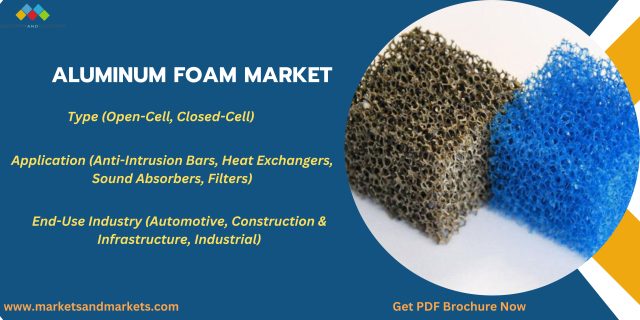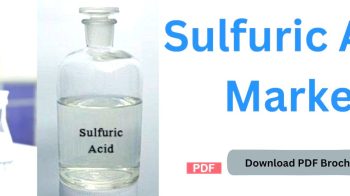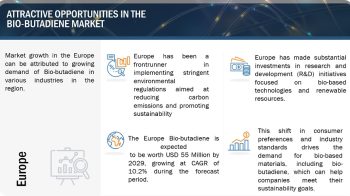
Aluminum foam, a remarkable lightweight material with a cellular structure, has garnered significant attention across industries for its unique properties and versatile applications. Combining the advantages of aluminum’s strength and foam’s low density, this advanced material is transforming various sectors, driving the aluminum foam market’s growth. The Aluminum Foam Market size is expected to reach USD 55 million by 2027, at a CAGR of 4.8% during the forecasted period, as per the recent study by MarketsandMarkets™.
The Advantages of Aluminum Foam:
Aluminum foam’s defining feature is its cellular structure composed of interconnected voids, resulting in a material that is incredibly lightweight yet structurally rigid. Its low density allows for significant weight reduction compared to conventional materials, making it an ideal choice in industries where weight plays a critical role, such as aerospace, automotive, and transportation. Furthermore, its excellent energy absorption capabilities make it suitable for safety applications, such as crash-absorbent materials and impact-resistant structures.
Download PDF Brochure: https://www.marketsandmarkets.com/pdfdownloadNew.asp?id=140772371
Aerospace and Automotive Applications:
The aerospace industry has embraced aluminum foam for various components, including interior panels, structural parts, and thermal insulation materials. The lightweight nature of aluminum foam contributes to fuel efficiency, reducing operating costs and carbon emissions. In the automotive sector, aluminum foam finds use in lightweight body panels, bumpers, and crash management systems, enhancing vehicle safety while improving overall performance.
Construction and Infrastructure:
In the construction industry, aluminum foam panels offer excellent thermal and sound insulation properties. Additionally, they provide structural support for roofs, walls, and floors, all while reducing the overall weight of the building. The material’s fire resistance and corrosion resistance further enhance its appeal for construction applications. In infrastructure development, aluminum foam is utilized in lightweight bridge decks, reducing the load on supporting structures and extending the life of the bridge.
Energy and Electronics:
Aluminum foam has proven its worth in the energy sector, serving as a heat exchanger in various applications, such as cooling systems for electronics and industrial equipment. Its high surface area and thermal conductivity contribute to efficient heat dissipation. In electronics, the material is used for vibration dampening, electromagnetic shielding, and as a core material for lightweight antennas and reflectors.
Sustainability and Future Prospects:
As industries increasingly prioritize sustainability, the aluminum foam market aligns perfectly with these objectives. Its lightweight properties contribute to reduced energy consumption, lower greenhouse gas emissions, and improved fuel efficiency, making it a vital material in the transition to greener technologies.
Inquiry Before Buying: https://www.marketsandmarkets.com/Enquiry_Before_BuyingNew.asp?id=140772371
Asia Pacific Takes the Lead: The Largest Market for Aluminum Foam in the Forecast Period
As industries seek lightweight and high-performance materials, aluminum foam has emerged as a promising solution, driving its market growth worldwide. Among the regions, Asia Pacific is poised to take the lead as the largest market for aluminum foam during the forecast period. Asia Pacific is experiencing rapid industrialization and urbanization, leading to increased demand for lightweight materials with superior properties. The aerospace and automotive sectors, in particular, are witnessing significant growth, where aluminum foam’s unique combination of low density and excellent mechanical strength is highly sought after. Additionally, the construction and infrastructure industries are embracing the material for its thermal insulation capabilities, structural support, and fire resistance.
The key players in the market include ERG Aerospace Corporation (US), CYMAT Technologies Ltd. (Canada), Alantum (South Korea), Liaoning Rontec Advanced Material Technology Co., Ltd. (China), Shanxi Putai Aluminum Foam Manufacturing Co., Ltd. (China), Mayser GmbH & Co. KG (Germany), Aluminum King Co., Ltd (China), and Pohltec Metalfoam GmbH (Germany). These companies have adopted expansions and joint ventures as a part of their strategic development.


